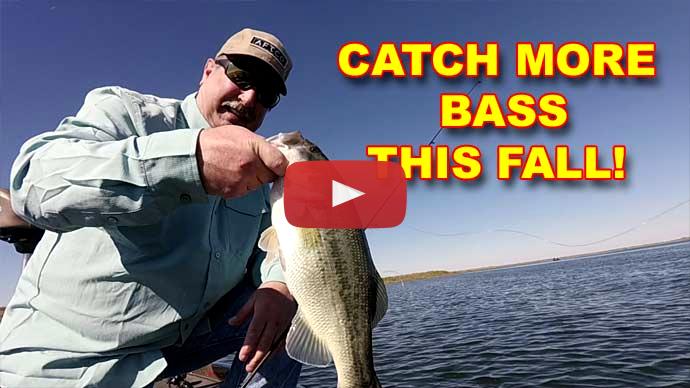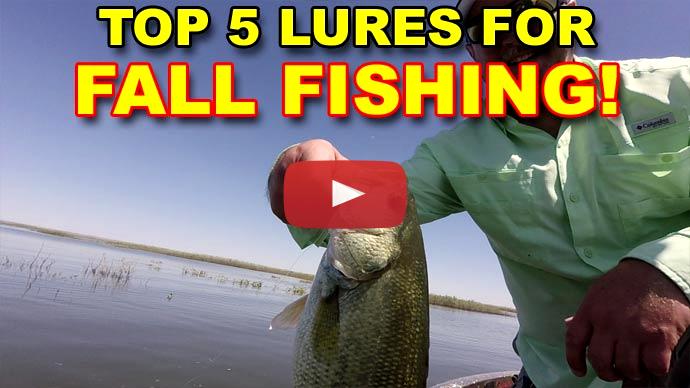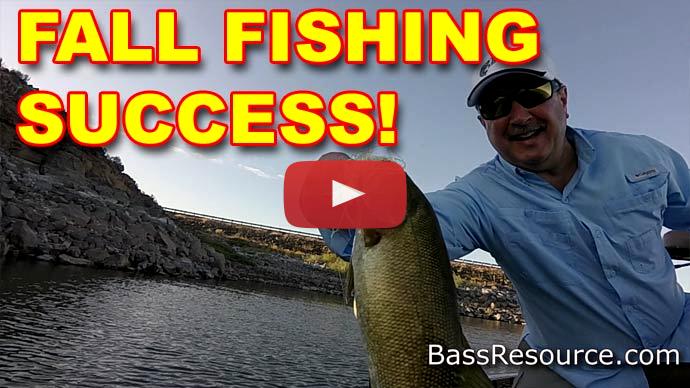All right, here are five rules for catching more bass during that fall transition period, starting with finding the baitfish. Yeah, it sounds obvious, but just hang with me for a second. During the year, you have different phases where the bass are keyed on different forage base or have different things in mind, like spring, they're focused on spawning. In the summertime, they're focused more on oxygen levels and water temperatures and staying comfortable. In the fall, the bass are keyed on baitfish, and they're keyed on eating baitfish. So you can do, like, crawdads and other things. No, baitfish is the forage. So you need to find a baitfish in order to catch a lot of bass.
So think about the type of forage base that's in your lake. If it's shad, you know they're going to school up, and they're going to be nomadic, they're going to be moving around a lot, but they will school up. And if you don't have shad, you can look at other species, right? Bluegill, perch, they do the same thing. They start to bunch up during this time of year. They really bunch up in the wintertime, but they start to do that now and start forming those schools. You can find them on your electronics, or you can find them by looking at bird activity. You know, the birds all start to dive-bomb in a certain area of the lake. Well, there's probably a lot of baitfish just under the surface. Those are the things you want to look for. Just be observant, and you can find that baitfish, and when you do, you'll find the bass.
The next rule is covering water. Kind of like what I alluded to just a minute ago, but baitfish are moving around. They're nomadic. And so it can be kind of hit and miss, hard to find. Sometimes it's like looking for a needle in a haystack. So you've got to cover water to find them. You just drop your trolling motor and go. Watch your electronics, watch for that bird activity, and throw a lot of fast-moving baits to see if you can at least get a bite. So you're throwing crankbaits, spinnerbaits, buzzbaits, topwater. They're throwing chatterbaits with shad-imitating plastic trailers on them. Things like that, you just cover a lot of water, and then once you hook into a fish, slow down, and cover that area more thoroughly, you might have got into a school, and if you did, well, jackpot, you're going to have a lot of fun. But that's the way to find them, is just covering a lot of water.
The third rule is look in obvious places. As bass anglers, we're always looking for that secret spot, right? That secret fishing hole, that thing that nobody else knows about, right? But, usually, you're the last person to know about it. Everybody else already knows about it. That's kind of how it goes. But the thing about it is fishing those obvious places are obvious for a reason, and it's because bass use them despite fishing pressure. So your points, especially long tapering points that go into the main lake, you're looking for humps, ridges, dams, riprap, right? You're looking for wing dams. Anything that seems pretty obvious, hey, make sure you throw some lures at it. Marinas are another good place to go fish. They seem obvious, but they always harbor bass. They usually do. So be sure to fish those obvious areas as those bass start to migrate their way up into the shallow waters. As they start chasing that baitfish around, they're going to use that structure and cover, and you should be fishing up.
The next one is seeking out isolated cover, right? I mean, right now, this time of year, if you have a reservoir, typically, it's drawn down for irrigation purposes, so it's lower water level. Even natural lakes, just evaporation or it hasn't rained much during the summertime, the water levels are down. And during this period, there's not a whole lot of cover in the weeds and that kind of stuff along the shoreline. So those isolated ones are hot spots. Don't overlook them. Look for laydowns. Look for stumps, isolated rocks, little small patches of cover. Those things can harbor a lot of fish in them, you'd be surprised, more than one. Even a small little pocket of weeds can have a lot of fish in it. No matter how insignificant it looks, make sure you fish them because you'd be surprised how many fish might be attached to those.
The last rule is really all about timing and be ready for it. So early in the morning and late in the evening, yep, those are prime time conditions because, again, bass are going after baitfish, and that's really when they feed on baitfish, is those low light conditions. So make sure you're fishing during those hours, but be ready pretty much any time during the day because that schooling action can fire up at any moment. That means you got to have the right lures ready rigged, ready to go, laying down on the deck of your boat, ready to throw because at any moment, fish can start blowing up nearby and you can capitalize on that moment. And sometimes you can just force it. While, again, you're throwing those topwater baits and those fast-moving crankbaits and whatnot, sometimes, just below the surface, you may not see that activity happening, but, bang, you hook into a fish with a crankbait, and it's on. You're ready to go. And that can happen at any moment during the day. So timing and being ready for that is absolutely crucial for capitalizing in during this part of the year.
That's all the tips I have for you right now. Go out there and catch them, and you're going to have yourself a blast.



